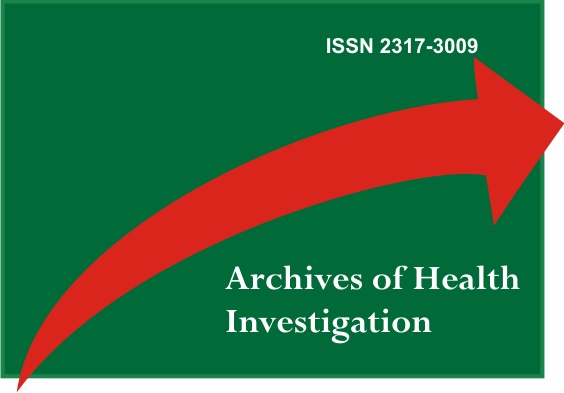Dental Cervical Lesions: How the Etiologies Imply in Different Approaches for Long-Lasting Performance
DOI:
https://doi.org/10.21270/archi.v11i1.5458Keywords:
Dental Caries, Composite Resins, Dentin, Glass Ionomer Cements, Tooth WearAbstract
Particularities of dental cervical lesions require distinct approaches from preventive to therapeutic managements. Therefore, practitioners depend on their etiology, selected materials and patient involvement to provide conditions to effective performance. Through representative clinical scenarios, the main considerations regarding carious and non-carious cervical lesions (NCCL) are reported for the determination of strategies. Details regarding the disease, lesions aspects, evolution and involvement or not of the periodontal tissues are considered in their decision. In conclusion, their long-lasting resolution is determined by a complex combination of biomechanical factors and therapeutic strategies for each particular lesion, regardless of the cervical location solely.
Downloads
References
Fejerskov O, Larsen MJ. Demineralization and remineralisation: the key to understanding clinical manifestations of dental caries. In: Fejerskov O, Nyvad B, Kidd E. Dental caries: the disease and its clinical management. 3rd ed. Oxford: Wiley Blackwell, 2015:160–69.
Innes NP, Frencken JE, Bjørndal L, Maltz M, Manton DJ, Ricketts D, et al. Managing carious lesions: consensus recommendations on terminology. Adv Dent Res. 2016;28:49-57.
Ismail AI, Pitts NB, Tellez M, Benerjee A, Deery C, Douglas G, et al. The International Caries Classification and Management System (ICCMS™) an example of a caries management pathway. BMC Oral Health. 2015;15:S9.
Schwendicke F, Frencken JE, Bjørndal L, Maltz M, Manton DJ, Ricketts D, et al. Managing carious lesions: consensus recommendations on carious tissue removal. Adv Dent Res. 2016;28:58-67.
Black GV. Operative Dentistry. Chicago: Medico Dental, 1908.
Rees JS. The effect of variation in occlusal loading on the development of abfraction lesions: a finite element study. J Oral Rehabil. 2002; 29:188-93.
Borcic J, Anic I, Urek MM, Ferreri S. The prevalence of non-carious cervical lesions in permanent dentition. J Oral Rehabil. 2004;31:117-23.
Grippo JO, Simring M, Coleman TA. Abfraction, abrasion, biocorrosion, and the enigma of noncarious cervical lesions: a 20-year perspective. J Esthet Restor Dent. 2012;24:10-23.
Peumans M, Politano G, Van Meerbeek B. Treatment of noncarious cervical lesions: when, why, and how. Int J Esthet Dent. 2020;15:16-42.
Soares PV, Souza LV, Veríssimo C, Zeola LF, Pereira AG, Santos-Filho PC, et al. Effect of root morphology on biomechanical behaviour of premolars associated with abfraction lesions and different loading types. J Oral Rehabil. 2014;41:108-14.
Tay FR, Pashley DH. Resin bonding to cervical sclerotic dentin: a review. J Dent. 2004;32:173-96.
Giacomini MC, Casas-Apayco LC, Machado CM, Freitas MC, Atta MT, Wang L. Influence of erosive and abrasive cycling on bonding of different adhesive systems to enamel: an in situ study. Braz Dent J. 2016;27:548-55.
Oliveira B, Ulbaldini A, Sato F, Baesso ML, Bento AC, Andrade L, et al. Chemical interaction analysis of an adhesive containing 10-methacryloyloxydecyl dihydrogen phosphate (10-MDP) with the dentin in noncarious cervical lesions. Oper Dent. 2017;42:357-66.
Oliveira B, Ubaldini A, Baesso ML, Andrade L, Lima SM, Giannini M, et al. Chemical interaction and interface analysis of self-etch adhesives containing 10-MDP and methacrylamide with the dentin in noncarious cervical lesions. Oper Dent. 2018;43:E253-65.
De Rooij JF, Nancollas GH. The formation and remineralization of artificial white spot lesions: A constant composition approach. J Dent Res. 1984;63:864–67.
Kidd EA, Fejerskov O. What constitutes dental caries? Histopathology of carious enamel and dentin related to the action of cariogenic biofilms. J Dent Res. 2004;83:35-8.
Bazos P, Magne P. Bio-emulation: biomimetically emulating nature utilizing a histo-anatomic approach; structural analysis. Eur J Esthet Dent. 2011;6:8-19.
Bazos P, Magne P. Bio-Emulation: biomimetically emulating nature utilizing a histoanatomic approach; visual synthesis. Int J Esthet Dent. 2014;9:330-52.
Boing TF, de Geus JL, Wambier LM, Loguercio AD, Reis A, Gomes OMM. Are glass-ionomer cement restorations in cervical lesions more long-lasting than resin-based composite resins? A systematic review and meta-analysis. J Adhes Dent. 2018;20:435-52.
Ebaya MM, Ali AI, Mahmoud SH. Evaluation of marginal adaptation and microleakage of three glass ionomer-based class V restorations: in vitro study. Eur J Dent. 2019;13:599-606.
Van Meerbeek B, Yoshihara K, Yoshida Y, Mine A, De Munck J, Van Landuyt KL. State of the art of self-etch adhesives. Dent Mater. 2011;27:17-28.
Yoshihara K, Yoshida Y, Hayakawa S, Nagaoka N, Kamenoue S, Okihara T, et al. Novel fluoro-carbon functional monomer for dental bonding. J Dent Res. 2014;93:189-94.
Soares PV, Santos-Filho PC, Soares CJ, Faria VLG, Naves MF, Michael JA, et al. Non-carious cervical lesions: influence of morphology and load type on biomechanical behaviour of maxillary incisors. Aust Dent J. 2013;58:306-14.
Jakupović S, Anić I, Ajanović M, Korać S, Konjhodžić A, Džanković A, et al. Biomechanics of cervical tooth region and noncarious cervical lesions of different morphology; three-dimensional finite element analysis. Eur J Dent. 2016;10:413-18.
Hussainy SN, Nasim I, Thomas T, Ranjan M. Clinical performance of resin-modified glass ionomer cement, flowable composite, and polyacid-modified resin composite in noncarious cervical lesions: One-year follow-up. J Conserv Dent. 2018;21:510-15.
Oz FD, Kutuk ZB, Ozturk C, Soleimani R, Gurgan S. An 18-month clinical evaluation of three different universal adhesives used with a universal flowable composite resin in the restoration of non-carious cervical lesions. Clin Oral Investig. 2019;23:1443-52.
Santos MJ, Ari N, Steele S, Costella J, Banting D. Retention of tooth-colored restorations in non-carious cervical lesions--a systematic review. Clin Oral Investig. 2014;18:1369-81.
Loguercio AD, Bittencourt DD, Baratieri LN, Reis A. A 36-month evaluation of self-etch and etch-and-rinse adhesives in noncarious cervical lesions. J Am Dent Assoc. 2007;138:507-14.
Honório HM, Rios D, Francisconi LF, Magalhães AC, Machado MAAM, Buzalaf MAR. Effect of prolonged erosive pH cycling on different restorative materials. J Oral Rehabil. 2008;35:947-53.
Rusnac ME, Gasparik C, Irimie AI, Grecu AG, Mesaroş AS, Dudea D. Giomers in dentistry - at the boundary between dental composites and glass-ionomers. Med Pharm Rep. 2019;92:123-28.
Shimazu K, Ogata K, Karibe H. Caries-preventive effect of fissure sealant containing surface reaction-type pre-reacted glass ionomer filler and bonded by self-etching primer. J Clin Pediatr Dent. 2012;36:343-47.
Yoneda M, Suzuki N, Hirofuji T. Antibacterial effect of surface pre-reacted glass ionomer filler and eluate–mini review. Pharm Anal Acta. 2015;6:349.


